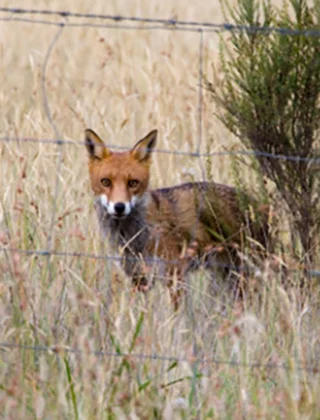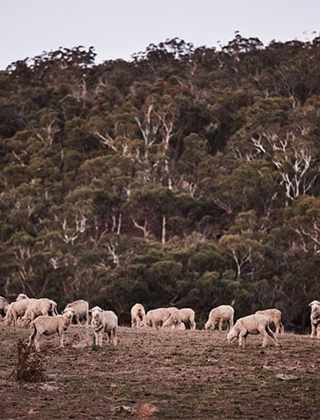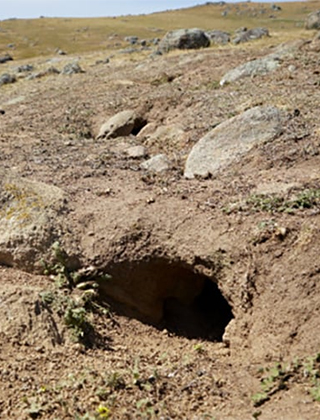Cluster fencing helping to rebuild the flock

After their business was decimated by wild dogs, the Chandler family at Barcaldine in Queensland constructed exclusion fencing on their property, which has enabled them to bring back sheep into their business and have a positive view for the future.
Merino sheep back on the Chandler family’s property after the construction of exclusion fencing.
After their business was decimated by wild dogs, the Chandler family at Barcaldine in Queensland constructed exclusion fencing on their property, which has enabled them to bring back sheep into their business and have a positive view for the future.
Queensland has a long and proud history of sheep and wool production. However, in the 15 years from 2001 to 2016 the state’s sheep numbers fell by about 80% from 8.7 million to 1.8 million. The damage inflicted by wild dogs caused landholders both financial and emotional stress, resulting in many landholders leaving the sheep and wool industry and restricting those wanting to enter it.
In the same 15-year period, Queensland agricultural jobs fell by 28%. The impacts of the reduction in sheep numbers and farm employment opportunities reached well beyond the farm gate; they were felt in the social and economic fabric of rural communities across the region.
However, in recent years landholders have begun a return to running sheep in Queensland, aided by the construction of cluster fencing that allows small stock like sheep to be protected from wild dog attacks.
Through the Queensland Feral Pest Initiative (QFPI), the Queensland Government committed $14.8 million to support the construction of cluster fencing in areas with high wild dog impacts. This was complemented by $9.3 million from the Federal Government and landholder contributions of approximately $51.7 million.
With the latest round of construction under the QFPI nearing completion, 456 properties covering 5,025,444 ha will be protected by a total of 8,142km of fencing.
Chandler Pastoral Holdings
One of the farming businesses that has benefitted from cluster fencing is Chandler Pastoral Holdings, a sheep and cattle business run by the Chandler family near Barcaldine in the Central West of Queensland.
Ben and Jayde Chandler live with their four young children at ‘Gregory Park’ on the western side of the Chandler family’s aggregation of 40,000 hectares that includes neighbouring properties where Ben’s parents, John and Joss, and Ben’s brother Tom and his wife Holly live.
“This open Downs country is traditionally very suited to sheep and wool production, actually more so than cattle, but it got to a point a decade or so ago where wild dogs were decimating the lambing population and made sheep production unsustainable,” Ben said.
“To give you an idea, we shore 20,000 sheep in the early 2000s and then wild dogs started getting on top of them, year-in year-out from then on, killing 2,000 ewes a year with lambings down to 2 per cent. It wasn’t viable for us to continue to produce sheep under those losses and mortality rates.”
The family sold all their remaining 5,000 sheep in 2010, transitioning into cattle whilst maintaining the infrastructure of three shearing sheds in the hope of going back into sheep one day.

Ben Chandler during construction of fencing.
Building the cluster fencing
“Then when the cluster fencing projects became more and more available, and the evidence was starting to grow that they were a viable investment, we certainly got on board with the opportunity and as a result we’ve stepped back into sheep in the past few years. It is certainly good to be back in the industry,” Ben said.
The QFPI subsidies were the catalyst for a lot of people to invest privately in exclusion fencing.
“One of the major drivers for the fencing for us was the fantastic infrastructure of three shearing sheds not getting used across three properties, but the QFPI subsidies through the local Remote Area Planning and Development Board (RAPAD) made it more appealing to be proactive about fencing,” Ben said.
The family initially completed 60km of exclusion fencing in 2015 as part of a 106km Clover Hills Cluster Group with three neighbouring properties.
The fences have given us the opportunity to take advantage of this prime sheep country again and give us control of our business.
- Ben Chandler
“That fencing got the outside of the wheel established and something to build off going forward. Since then, we have proactively added the spokes to the wheel, creating internal manageable cells we can control more readily. We now have 140km of fencing.
“In addition, all the neighbouring properties have continued to fence their own places outside these clusters, increasing the security and effectiveness, and further improving manageability of vertebrate pests and related pressures in the area.
“It’s exciting when you look at a map of the region and you see clusters going up everywhere. It has really made sheep and wool production a realistic possibility again, which is terrific.”
Getting back into sheep
With great excitement, the family reintroduced the first sheep – 1,600 Merino ewes – back into the enterprise in 2018 to test the new model, working with two professional wild dog trappers operating across the aggregation, along with strategic ground baiting. The family now runs 5,500 Merino sheep and 2,000 Santa Gertrudis female cattle.
The fencing has not only reduced losses through predation but has also given the Chandlers the ability to control and manage joinings and animal husbandry a lot more easily.
“With the fences up, the lambing numbers are back to where they should be, around 80-90 per cent across the region. We have just marked over 100 per cent of lambs for our second year in a row, which is fantastic,” Ben said.
"With the fences up, the lambing numbers are back to where they should."
- Ben Chandler
“The fences have given us the opportunity to take advantage of this prime sheep country again and give us control of our business. Running a dual enterprise provides us with diversity in our business and an ability to spread cash flow out over the whole year with different income streams.”
Ben cautions that while fencing is one of the most effective tools for the management of wild dogs, it must still be complemented by other traditional methods of control.
“It’s naive for anyone to think that fencing is the be-all-and-end-all; you’ve still got to continue with your control programs of baiting, trapping and shooting,” he said.
Landholders are also reporting environmental improvements through being able to better control grazing and maintain ground cover.
“Wild dogs were previously causing overgrazing of the paddocks in some areas which was resulting in land degradation. The advantage of being able to ‘lock-up’ paddocks is then being able to manage the conservative and controlled grazing pressure from livestock,” Ben confirms.
Benefits for communities and families
As well as the positive financial impact on individual producers, the reintroduction of sheep has a positive economic and social influence on rural towns and local communities.
“The possibilities for these communities are now endless. Increased sheep numbers equals increased employment opportunities – from jackaroos to shearers, from cooks to livestock agents – and therefore increased expenditure in the towns,” Ben said.
“We’re so lucky to be in an area where landholders have got on board – which benefits families and the children too. If the kids are growing up on a profitable and diverse property in a thriving community then they are more likely want to stay on here as adults – and we absolutely want them to be out here and involved.”
Exclusion fencing booklets

Information and photos of successful exclusion fences are included in AWI’s free 36-page Wild dog exclusion fencing: a practical guide for woolgrowers, which was published in 2017.

To complement the AWI guide, AWI also makes available the 14-page Kondinin Group Research Report Exclusion Fencing, Fighting Ferals, which was published in 2016.
More information: www.wool.com/exclusionfencing
This article appeared in the December 2022 edition of AWI’s Beyond the Bale magazine. Reproduction of the article is encouraged.















